
Chechnya, officially the Chechen Republic, is a republic of Russia situated in the North Caucasus of Eastern Europe, close to the Caspian Sea. The republic is part of the North Caucasian Federal District, and shares land borders with the country of Georgia to its south; and borders the Russian republics of Dagestan to its east and north, Ingushetia and North Ossetia–Alania to its west; while sharing a border with Stavropol Krai to its northwest.

Grozny is the capital city of Chechnya, Russia. The city lies on the Sunzha River. According to the 2010 Census, it had a population of 271,573; up from 210,720 recorded in the 2002 Census, but still only about two-thirds of 399,688 recorded in the 1989 Census. It was previously known as Groznaya.

The First Chechen War, also known as the First Chechen Сampaign, or First Russian-Chechen war, was a rebellion by the Chechen Republic of Ichkeria against the Russian Federation, fought from December 1994 to August 1996. After the initial campaign of 1994–1995, culminating in the devastating Battle of Grozny, Russian federal forces attempted to seize control of the mountainous area of Chechnya but were set back by Chechen guerrilla warfare and raids on the flatlands despite Russia's overwhelming advantages in firepower, manpower, weaponry, artillery, combat vehicles, airstrikes and air support. The first war was preceded by the Russian Intervention in Ichkeria, in which Russia tried to covertly overthrow the Ichkerian government. The resulting widespread demoralization of federal forces and the almost universal opposition of the Russian public to the conflict led Boris Yeltsin's government to declare a ceasefire with the Chechens in 1996 and sign a peace treaty a year later.

The Second Chechen War was an armed conflict in Chechnya and the border regions of the North Caucasus between the Russian Federation and the Chechen Republic of Ichkeria, fought from August 1999 to April 2009.
The history of Chechnya may refer to the history of the Chechens, of their land Chechnya, or of the land of Ichkeria.

The Republic of Ingushetia, also referred to as simply Ingushetia, is a federal subject of the Russian Federation, located in the North Caucasus region.
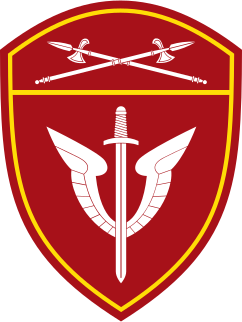
OMON is a system of special police units of the Police of Russia within the National Guard of Russia, and previously Soviet and Russian Ministries of Internal Affairs. It was created as the special forces of the Soviet Militsiya in 1988, and then played major roles in several armed conflicts during and following the dissolution of the Soviet Union.
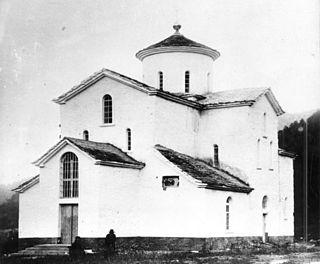
The Republic of North Ossetia – Alania is a federal subject of Russia, located in the Caucasus region.
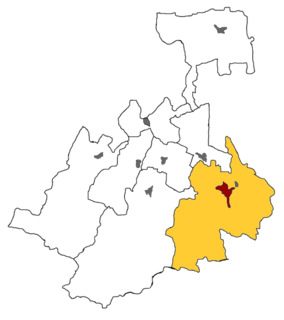
The East Prigorodny Conflict, also referred to as the Ossetian–Ingush Conflict, was an inter-ethnic conflict in the eastern part of the Prigorodny District in the Republic of North Ossetia–Alania, which started in 1989 and developed, in 1992, into a brief ethnic war between local Ingush and Ossetian paramilitary forces.

The Chechen Republic of Ichkeria was a partially recognized secessionist government of the Checheno-Ingush ASSR. On 30 November 1991 Ingushetia would have a referendum in which the results dictated its separation from the Chechen Republic of Ichkeria, joining the Russian Federation instead as a constituent republic.

The Caucasian Front also called Caucasus Front or the Caucasian Mujahadeen, was formally established in May 2005 as an Islamic structural unit of the Chechen Republic of Ichkeria's armed forces by the decree of the separatist President of Chechnya Abdul-Halim Sadulayev during the Second Chechen War.
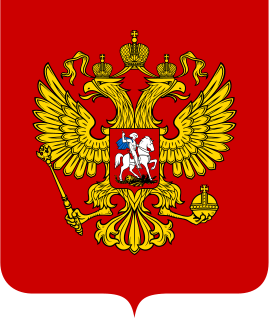
The Republic of Chechnya is a Republic, a federal subject of the Russian Federation. It is located in the Caucasus region in south west Russia. It is the political successor of the Checheno-Ingush Autonomous Soviet Socialist Republic. From a centralized form of government during the existence of the Soviet Union, the republic's political system went upheavals during the 90s with the unrecognized establishment of the Chechen Republic of Ichkeria which led to the wars, the First Chechen War and the Second Chechen War which left the republic in total devastation. In 2000, following Russia's renewal rule, a local, republican form of government established in the republic under the control of the Russian federal government
The Grozny riots of 1958 occurred between 23 and 27 August that year in Grozny. Although beginning as a small-scale event, it turned a major event in the history of the city, of Chechnya and of Russo-Chechen relations, starting a series of ethnic riots, to continue until 1965.
The 1940–1944 insurgency in Chechnya was an autonomous revolt against the Soviet authorities in the Chechen-Ingush Autonomous Soviet Socialist Republic. Beginning in early 1940 under Khasan Israilov, it peaked in 1942 during the German invasion of North Caucasus and ended in the beginning of 1944 with the wholesale concentration and deportation of the Vainakh peoples from their native lands as well as from the locations across the USSR, resulting in the death of at least 144,000 civilians. However, scattered resistance in the mountains continued for years.

The Deportation of the Chechens and Ingush, also known as Aardakh, Operation Lentil ; Ingush and Chechen: Вайнах махкахбахарVaynah Mahkahbahar) was the Soviet forced transfer of the whole of the Vainakh populations of the North Caucasus to Central Asia on February 23, 1944, during World War II. The expulsion was ordered by NKVD chief Lavrentiy Beria after approval by Soviet Premier Joseph Stalin, as a part of a Soviet forced settlement program and population transfer that affected several million members of non-Russian Soviet ethnic minorities between the 1930s and the 1950s.
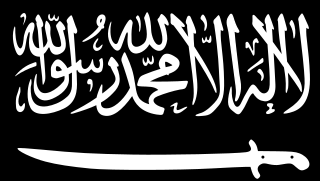
Vilayat Galgaycho was an Islamist militant organization connected to numerous attacks against the local and federal security forces in the Russian regions of Ingushetia and Chechnya in the North Caucasus. Since 2007 it has been a part of the Caucasus Emirate and takes part in the Insurgency in the North Caucasus. The group is thought to be responsible for the deaths of hundreds of people, mostly policemen, military personnel and officials.
Grozny Oblast was an administrative entity of the Russian SFSR that was established as Grozny Okrug on 7 March 1944 and abolished on 9 January 1957.
The following is a timeline of the history of the city of Grozny, Chechen Republic, Russia.

The Chechen–Russian conflict is the centuries-long conflict, often armed, between the Russian government and various Chechen forces. Formal hostilities date back to 1785, though elements of the conflict can be traced back considerably further.













